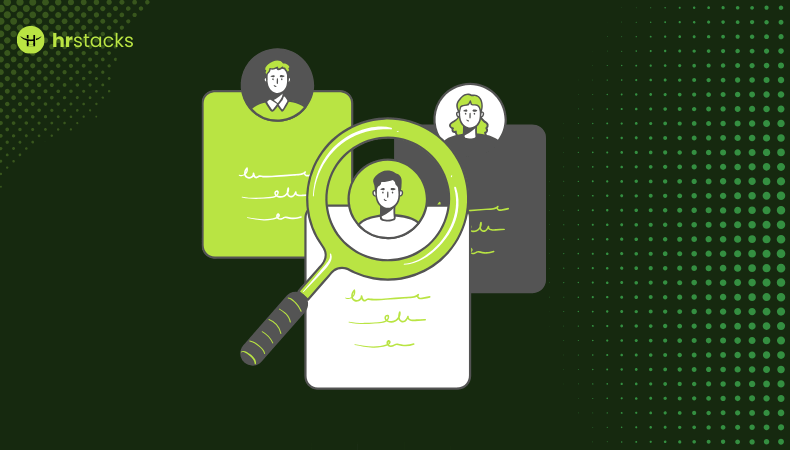With five generations now coexisting in the workforce, the potential for innovation or friction is unprecedented. From Baby Boomers to Gen Z and soon Gen Alpha, generational diversity is reshaping how we lead, collaborate, and grow.
This blend, when guided thoughtfully by HR, becomes a powerful source of innovation, mentorship, and adaptability. Multigenerational teams fuel creativity, foster knowledge-sharing, and improve problem-solving.
Yet despite this promise, many leaders struggle: one survey found only 6 % of organizations feel confident in managing cross-age teams.
HR’s role goes far beyond recruiting across generations; it’s about designing environments where every voice is heard, where communication norms respect diverse preferences, and where structured mentoring bridges gaps.
In the following sections, we’ll explore how HR professionals can strategically cultivate empathy, align policies, and foster leadership to turn generational differences into a competitive advantage.
Key Takeaways:
- Multigenerational teams unlock innovation, empathy, and retention, if managed well.
- Reverse mentoring, personalized learning, and inclusive policy design are key levers.
- Legal compliance must balance age equity with accessibility and support.
- Gen Alpha and AI will reshape workforce expectations, HR must get future-ready now.
Understanding Generational Diversity in the Workplace
Before designing effective approaches, HR must gain a clear understanding of the distinct traits and preferences that each generation brings to the table.
Here’s a snapshot of the six generations now intersecting in many organizations (framework updated for 2025):
- Silent Generation (born 1928–1945): Known for their discipline, respect for hierarchy, loyalty, and preference for face-to-face interaction.
- Baby Boomers (1946–1964): Value job security, formal in-person meetings, and hierarchical clarity; yet remain open to digital learning.
- Gen X (1965–1980): Independent, adaptable, and driven by work-life balance; they prefer pragmatic communication channels like email.
- Millennials (1981–1996): Purpose-minded, digitally fluent, and collaborative. They thrive when provided with regular feedback and meaning-rich roles.
- Gen Z (1997–2012): True digital natives, entrepreneurial, and eager for flexibility and fast-paced progress.
- Gen Alpha (post-2012): On the cusp of entering the workforce, extremely tech-savvy and socially conscious, introducing a new dimension to workforce planning.
Why Generational Diversity Matters in HR Strategy?
These nuances show why stereotyping by generation limits true understanding of what motivates or frustrates employees.
Psychological research underscores this: despite surface-level differences, core drivers like meaningful work, recognition, autonomy, and security are consistent across generations.
Harvard Business Review recommends HR professionals actively “de-silo” generational thinking, creating environments where teams are connected by shared language, values, and mutual respect rather than separated by age groups.
Understanding and challenging these assumptions sets the stage for HR to shape policies, communication practices, and leadership programs that appreciate nuance, promote equity, and leverage the collective strengths of all age cohorts.
Building an Inclusive Workplace Culture Across Generations
Creating unity across age groups begins with a culture grounded in shared human values. HR professionals can play a key role by actively promoting these principles.
At a Glance: Why Generational Inclusion Can’t Wait
- Only 6% of organizations feel confident managing multigenerational teams.
- Companies with age-diverse teams are 35% more creative and solve problems faster.
- 83% of global leaders believe generational diversity fuels long-term business growth.
- Reverse mentoring programs (e.g., British Airways, PwC) have boosted inclusion and innovation.
How to Identify Shared Values Across Generations
While each generation has its unique qualities, they often converge on core values such as purpose, respect, recognition, and balance. HR advisor emphasizes the importance of uniting around these commonalities rather than fixating on differences.
Facilitated workshops or interactive sessions, whether virtual or in-person, can help teams identify shared goals and spark meaningful collaboration across age groups.
Encouraging Respectful Communication Between Generations
Communication preferences vary by generation. Someone from the Baby Boomer cohort might favor structured, in-person meetings, while Millennials and Gen Z often lean toward Slack or Zoom.
HR should support flexible communication norms, encouraging managers to tailor their approach to the audience and avoid oversimplified generational stereotypes.
This “kaleidoscopic” approach to communication fosters inclusivity and prevents misunderstandings.
Creating Psychological Safety in Multigenerational Teams
Intergenerational trust grows best in environments where employees feel safe to speak up. Iéseg Business School’s intergenerational workshops pair senior executives with younger colleagues, guided by open dialogue and ongoing mentorship.
Their findings reveal that differences in expectations are often smaller than perceived, while joint experiences reinforce empathy and recognition of shared workplace values.
This strengthened foundation of common values, adaptive communication, and psychological safety sets the stage for HR to design strategies that unite generations into productive, resilient, and creative teams.
Implementing Reverse and Cross-Generational Mentoring Programs
Reverse mentoring flips the traditional mentoring dynamic by having junior employees guide senior leaders on topics like emerging technologies, social media trends, and generational expectations.
Meanwhile, senior staff reciprocate by offering career advice, historical insights, and seasoned perspectives. This dynamic partnership nurtures mutual growth and respect.
Why It Matters
- Challenges hierarchical norms and builds empathy: By valuing junior voices, organizations underscore that leadership isn’t generational but merit-based, enhancing trust and flattening power structures.
- Bridges tech and cultural divides: Senior executives gain firsthand insight into how younger colleagues view digital tools, flexible work, and communication styles, learning nuances that might otherwise remain abstract.
- Improves psychological safety and retention: Early-career participants from underrepresented backgrounds feel visible and heard, which boosts inclusion and lowers turnover.
How to Build Teams That Leverage Generational Strengths
- British Airways began with 11 reverse‑mentoring pairs and scaled to 80, reporting noticeable improvements in both cultural awareness and strategic alignment.
- PwC China’s “Deals Reverse Mentoring” pairs junior and senior staff to break down generational silos, spark fresh ideas and increase retention through inclusive dialogue.
- P&G, PwC (global), Virgin Atlantic, Estée Lauder, and others expanded similar programs between 2023 and 2024.
- Iéseg Business School’s intergenerational workshops saw executives paired with Gen Z students, leading to stronger empathy, shared values, and improved collaboration.
Designing Teams For Complementary Strengths
Creating teams that harness the full power of generational diversity requires intentional design and strategic alignment of roles with strengths. Here’s how HR can facilitate this effectively:
Why Generationally Diverse Teams Outperform
As organizations move toward intentional team design, the data makes it clear: embracing generational diversity isn’t just ethical, it’s strategic.

Designing High-Performance Multigenerational Teams
HR should deliberately build generationally diverse teams, a strategy shown to improve problem-solving, creativity, and adaptability. CTO Magazine highlights that such teams blend distinct communication styles and worldviews, yielding innovative solutions and enhanced productivity.
For complex tasks, mixed-age groups outperform homogeneous ones, especially when supported by dense interconnections and trust.
Aligning Roles with Generational Strengths
Avoiding generational stereotypes is key. Older generations don’t simply “mentor and guide,” nor should younger colleagues be confined to “tech roles.”
As one Fortune 500 study observes, elders bring strategic context while younger members energize teams with digital fluency, and that combination is powerful.
Example in Action: GrECo Group’s Austrian office integrated Gen Z member Daniel Szöke into a seasoned team; his fresh digital insights, combined with seasoned colleagues’ domain knowledge, led to greater agility and team learning.
Why This Matters for HR
- Broader perspective: Teams equipped with wide-ranging experience and ideas are 35% better at solving complex problems and are more creative.
- Knowledge circulation: Elders share institutional memory while younger teammates introduce new methods, ensuring both continuity and evolution.
- Risk mitigation: Age-diverse teams produce more balanced, innovative decisions and are less prone to groupthink.
Managing Generational Conflict and Unconscious Bias in the Workplace
- Curated team assignments: Map out strengths across generations, experience, digital fluency, and collaboration, and build teams to complement each other.
- Shared problem-solving rituals: Use structured brainstorming formats and ensure equitable voice across generations, leveraging diverse thought without bias.
- Facilitate cross-generational pairing: Encourage informal pairings in daily work, even if not formal mentoring, so individuals learn from each other naturally.
- Provide adaptive leadership training: Train leaders to recognize and optimize generational strengths while reducing unintended power imbalances or communication gaps.
By combining strategic hiring, role alignment, intentional team structures, and facilitation tools, HR can transform generational diversity from a challenge into a defining organizational strength.
Customizable Policies & Inclusive Learning
HR must design policies that adapt to employees’ life stages, making the workplace inclusive for all. In India, HR teams at EY GDS and Ceat Tyres introduced “silent hours”, no emails or calls after 8 p.m., based on Gen Z feedback to support boundaries and reduce burnout.
Mercer also introduced eldercare leave, reflecting the realities of multigenerational caregiving.
Companies like Accenture offer financial-wellness apps and AI-powered career platforms (e.g., iAspire) that appeal to younger employees without excluding older cohorts.
Inclusive learning programs should follow a blended format: in-person sessions meet the structured preferences of older staff, while Millennials and Gen Z benefit from microlearning and digital modules.
BridgeLegal & HR Solutions recommends tailoring learning paths to career aspirations and accommodating diverse learning styles, whether deep-dive workshops, bite-sized videos, or peer-coaching. Regularly analyzing feedback ensures programs remain relevant.
Successful implementation comes from modular policy frameworks, like flexible shifts, caregiving leave, ergonomic support, and curated learning journeys that allow employees to choose what best suits their needs.
Such personalized policies boost engagement and collaboration across generations, and continuous upskilling, transforming policies from uniform mandates into personalized career support.
Managing Conflicts And Biases
Addressing Generational Stereotypes in the Workplace
Many age-based assumptions stem from unspoken biases, like equating younger workers with entitlement or older staff with rigidity. HR can break these down through targeted workshops that surface and challenge these misconceptions.
Corban OneSource’s training programs, for example, use real-life scenarios to expose how legacy hierarchical norms clash with newer expectations for flexibility and autonomy, helping teams confront stereotypes directly.
Training Managers for Inclusive, Cross-Generational Leadership
Managers often revert to “command-and-control” styles that alienate younger staff or overlook the wisdom of experienced employees.
FT.com highlights Oracle executive Charlène Geffroy’s shift toward servant leadership, where leaders prioritize well-being, shared decision-making, and active listening, reducing age-related miscommunication and fostering mutual respect.
Conflict Resolution Strategies for Generational Teams
Even with proactive training, conflicts will arise. HR should establish clear, impartial processes, anonymous feedback channels, age-inclusive mediation, and mentor-mediated resolution paths that let employees air grievances without fear.
SHRM’s guidelines recommend embedding these channels within existing HR policies to ensure timely, fair handling of age-related issues.
By confronting stereotypes, equipping leaders with inclusive skills, and formalizing conflict pathways, HR turns generational tension into opportunities for dialogue, innovation, and stronger team cohesion.
Ensuring Age Equity and Legal Compliance in HR Policies
Navigating age and equity laws is a non-negotiable responsibility of HR. The U.S. Age Discrimination in Employment Act (ADEA), for example, prohibits bias against employees aged 40 and over, covering hiring, promotion, compensation, training, and benefits, across organizations with 20 or more employees.
But HR’s legal duties don’t stop there: policies must also align with broader employment legislation, such as Title VII, the ADA, and various state laws that may offer stronger protection.
In practice, HR must audit job postings, recruitment processes, and promotion criteria to ensure age-neutral language and standards. Benefits structures, including retirement plans, must adhere to ADEA’s requirements, ensuring that older workers are not disadvantaged compared to younger peers.
The ADA further requires reasonable accommodations for disabilities, and HR must guarantee accessibility, electronically and physically, for all employees.
Equity also extends to training access, performance evaluations, and disciplinary processes; every employee, regardless of age, must have equal opportunity to develop, advance, and contribute. Best-in-class organizations use ongoing audits, manager training, and compliance reviews to reduce legal risk while reinforcing fairness.
Why it matters
- Ensures fair hiring, promotion, and benefit allocation.
- Prevents costly legal actions and discrimination lawsuits.
- Promotes trust, inclusion, and workforce stability.
How HR Technology Supports Generational Inclusion
Implementing inclusive HR technology and analytics empowers HR to tailor experiences across generations. Modern HRIS and e-HRM systems centralize profiles, skills, and learning preferences, enabling HR to analyze who participates in mentorship, training, or flexible working programs.
AI-driven platforms like IBM’s Watson or Siemens’ “MindSphere” analyze communication patterns and recommend collaboration practices that bridge generational preferences.
These tools can predict retention risks, identify skill gaps, and suggest personalized learning paths. Unilever saw a 25 % increase in upskilling engagement by using AI-powered L&D, and DHL reduced training costs by 30 % with data-driven insights.
Additionally, analytics platforms such as Humanyze evaluate communication flows to uncover bottlenecks and increase psychological safety among mixed-age teams.
By integrating technology and analytics, HR gains visibility into how different generations interact, learn, and work best. This empowers HR to create evidence-based policies that support flexible work, personalized development, and inclusive collaboration across age groups.
Why it matters:
- Personalized learning engages employees across all generational learning preferences.
- Analytics help foresee turnover and prevent age-related attrition risks.
- AI-driven insights tailor collaboration practices for varied communication styles.
- Data highlights biases and enables equitable talent management decisions.
- Tech supports hybrid work preferences and generation-agnostic flexibility.
HR Toolkit for Managing Generational Diversity in 2025 and Beyond
The examples below illustrate that whether through reverse mentoring, inclusive workshops, or tailored policies, organizations that embrace generational diversity see practical benefits, ranging from empathy and innovation to retention and cohesion.
British Airways & UK Corporate Reverse Mentoring
British Airways significantly scaled its reverse mentoring program from just 11 pairs to 80 by 2023, driven by the goal of uncovering hidden barriers and enhancing empathy and bias awareness.
This ensured senior leaders gained direct insight into underrepresented perspectives and everyday workplace challenges, resulting in improved decision-making and more inclusive strategic thinking.
Similar initiatives have been championed by Estée Lauder, PwC, P&G, and Virgin Atlantic, demonstrating widespread corporate adoption.
Iéseg Business School
Iéseg’s intergenerational workshops paired C-suite executives with students, fostering deeper mutual understanding. Participants reported that initial assumptions about generational differences often gave way to shared values, such as autonomy, purpose, and recognition.
The process highlighted that generational expectations are more similar than assumed, bridging divides through dialogue and shared leadership experiences.
AT GrECo Austria
At GrECo’s Austrian office, introducing a Gen Z member into a generationally experienced core team led to measurable agility gains. Veteran staff adopted fresh digital tools, while younger colleagues absorbed strategic and contextual expertise, demonstrating functional symbiosis across age cohorts.
IN India Inc (Bengaluru)
In Bengaluru, EY GDS, Continental, Accenture, Mercer, Ceat Tyres, and others introduced “silent hours”, real-time recognition tools, wellness initiatives, eldercare leave, and AI-guided career platforms tailored to Gen Z’s needs. These adaptive policies have strengthened engagement, reduced burnout, and supported work–life balance across multiple generations.
HR Toolbox: Strategies For 2025 And Beyond
By 2025, HR must transition from traditional practices to dynamic, tech-enabled toolkits, integrating inclusive platforms, real-time feedback loops, and AI-powered insights.
This evolving toolbox empowers HR to monitor engagement, surface biases, customize development, and continuously reinforce culture, even across hybrid and multigenerational environments.
| Focus Area | HR Actions | Benefits |
| Awareness & Training | Workshops, bias training, communication norms | Improved empathy, reduced generational friction |
| Mentoring Programs | Reverse & cross-generational pairing, clear support structure | Knowledge sharing, inclusion, leadership development |
| Policy Design | Flexible schedules, wellness, and eldercare support, equitable benefit access | Boosted retention and satisfaction across cohorts |
| Learning & Development | Blended training modules, multi-modal delivery, peer-led coaching | Continuous upskilling across all generations |
| Technology Enablement | Inclusive HRIS, transparent AI tools, analytics dashboards | Enhanced engagement, data-driven insights |
| Leadership Development | Serveleadership training, conflict resolution, age-inclusion coaching | Adaptive and resilient management |
Measuring Success
These targeted metrics provide HR with a robust, data-driven framework to evaluate the impact of generational inclusion initiatives and inform continuous improvement.
- Employee engagement by generation: Track engagement via surveys segmented by age to identify motivators and tailor support sustainably.
- Retention and turnover analysis: Compare turnover rates across generations to detect retention issues, guiding targeted retention strategies.
- Mentoring program outcomes: Measure mentoring match satisfaction, skill transfer rates, and promotion outcomes post program launch.
- Training effectiveness by cohort: Evaluate learning completion, knowledge retention, and performance improvement across age-defined groups.
- Communication flow and collaboration analytics: Use HR analytics to visualize information flow, detecting generational bottlenecks or silos.
- Diversity, equity, inclusion (DEI) indicators: Monitor diverse representation in hiring, promotion, and pay equity across age segments.
- Predictive analytic insights: Leverage AI to identify risk factors predicting generational attrition before it occurs.
Preparing for Gen Alpha and AI-Driven Culture in the Workplace
As early members of Generation Alpha start entering the workforce by the late 2020s, HR leaders must prepare for their unique blend of digital fluency, entrepreneurial drive, and social responsibility, attributes that will disrupt conventional workplace norms and expectations.
At the same time, AI is permeating every aspect of HR, boosting efficiency but also raising ethical questions around bias, transparency, and fairness.
Forward-thinking HR professionals must oversee AI systems carefully, ensuring robust governance while nurturing agile, servant‑leadership cultures that value empathy and cross-generational trust.
What to Expect from Gen Alpha in the Workforce
By 2030, Gen Alpha (currently entering teen years) will enter the workforce, bringing even greater tech proficiency, social responsibility, and rapid learning curves. HR must begin adapting now, chartering policies that anticipate next-gen needs.
Managing AI Ethics in a Generationally Inclusive Workplace
As AI embeds into HR, from performance scoring to chatbots, transparency and fairness are critical. Research warns that employee trust hinges on the ethics of AI. HR must ensure these systems respect generational preferences and well-being.
The Role of Empathy and Servant Leadership in the Future of Work
The future of leadership is inclusive and empathetic, servant leadership, where workplace purpose and human connection matter more than hierarchy.
Conclusion: Turning Generational Diversity into a Competitive Advantage
Generational diversity doesn’t have to divide; it can unite. When HR leaders combine a thoughtful mindset, adaptable policies, and an inclusive culture with data-driven strategies, they turn generational differences into organizational strengths.
Research shows that firms embracing diverse age groups are 35% more creative and innovative, while 83% of global leaders recognize the importance of generational diversity for growth.
Executing reverse mentoring, flexible team structures, servant leadership, and ethical AI-driven tools helps support shared purpose, boosting engagement and retention. Planning for Gen Alpha’s digital fluency and robust expectations ensures HR stays ahead of workforce shifts.
Ultimately, organizations that proactively design for generational inclusion achieve greater innovation, stronger culture, and sustained employee commitment.









